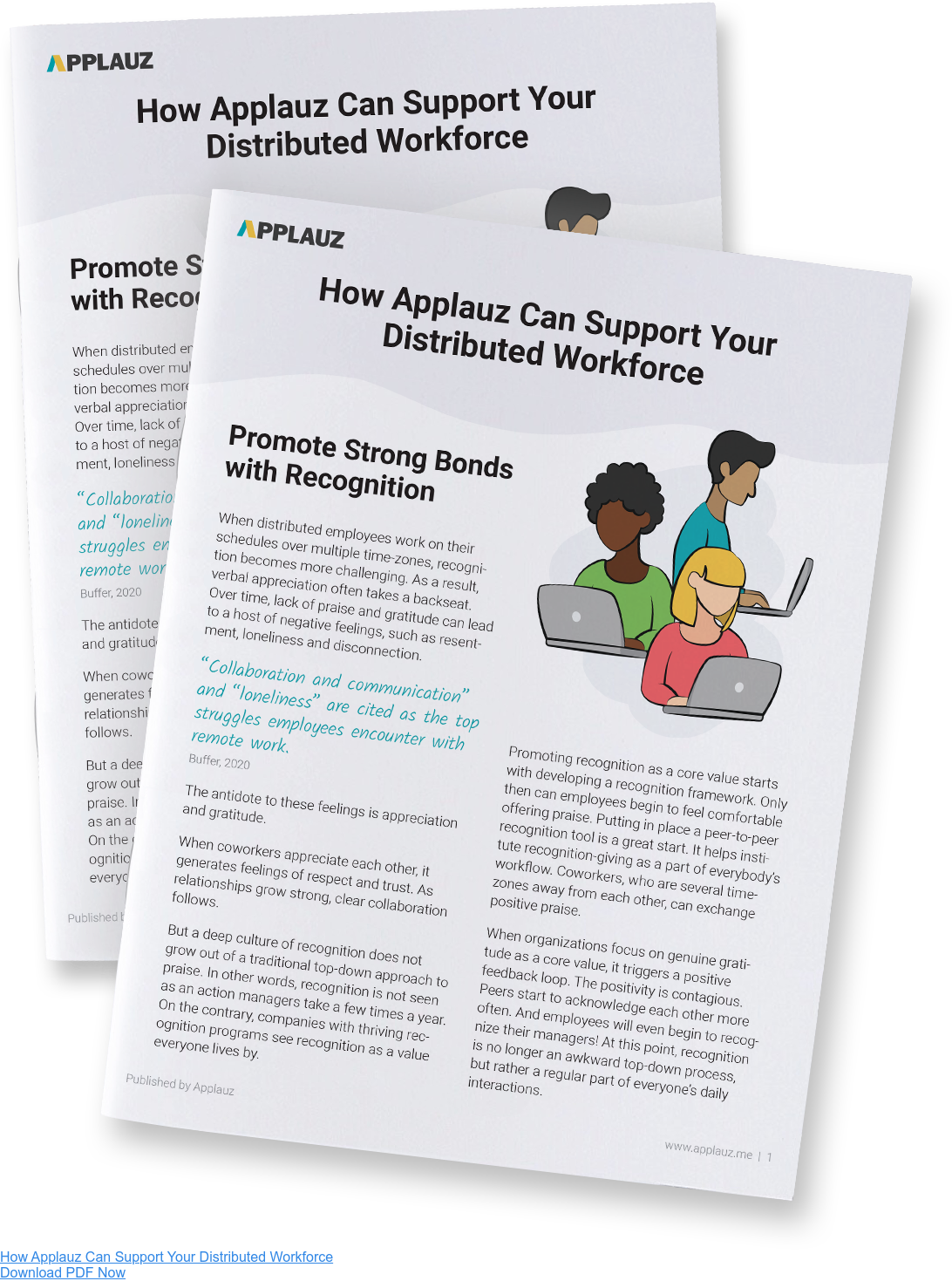The pandemic accelerated shifts that were already transforming the workplace. Abrupt and extended office closures ushered in a new era of remote work and virtual workplaces. While this change was initially driven by necessity, it has sparked an ongoing conversation about the benefits—or downsides—of how virtual workplaces impact employee productivity and corporate culture. Regardless of where you stand, one thing is clear: according to recent remote work statistics, remote work and virtual workplaces are here to say. Embracing this new paradigm means effective planning and execution to ensure a well-running business. Here, we’ll explore the advantages and disadvantages of virtual workplace and how to create an effective one that meets both employers’ and employees’ needs.
What is a Virtual Workplace?
First, it’s important to define what a virtual workplace is, and what it looks like. A virtual workplace is a work environment where employees can perform their tasks from a location of their choice, often from the comfort of their homes or other remote settings (the digital nomad movement has encouraged some employees to work from other countries, like Portugal, which introduced a visa targeted to millennial remote workers who need little more than a Wi-Fi connection). When managing remote teams, this concept revolves around leveraging technology to facilitate communication, collaboration, and productivity among remote team members.
In a virtual workplace, physical office spaces become less relevant, and the focus shifts to digital tools, online platforms, and flexible work arrangements. The goal is to ensure that employees can seamlessly collaborate, share information, and contribute to the organization's goals, regardless of their geographical location.
So why are we talking about virtual workplaces now? For starters, the pandemic closures forced employers to adapt to an abrupt shift to remote work—and the trend is showing no signs of slowing down. The Environics Institute for Survey Research’s Survey on Employment and Skills finds that about 31% of Canadian workers are fully remote, representing a 25% increase compared to pre-pandemic levels.
No matter your staffing model, the future of work is remote, global and decentralized—and virtual workplaces are here to stay.
The Advantages and Disadvantages of a Virtual Workplace
The goal of a virtual workplace is not necessarily to mimic the office environment exactly, but rather to offer flexibility, foster a collaborative culture, and enable productivity regardless of physical location. But while the virtual workplace benefits both employers and employees, there are potential downsides that employers should be aware of. Here, we’ll explore what works about virtual workplaces, and what doesn’t.
What are the Advantages?
One of the most significant advantages of the virtual workplace is the flexibility it offers. Whether working part-time or full-time, remote employees are offered the flexibility to create work schedules that align with their personal lives. This flexibility can enhance work-life balance, leading to increased job satisfaction and overall well-being. A recent McKinsey study found that flexibility was the third most important motivating factor for finding a new job. Another from the Pew Research Center finds that 71% of remote workers in the US say that working from home helps them balance their personal and professional lives.
Virtual workplaces can also save on costs for both employers and employees. Companies can significantly reduce overhead expenses while employees save on commuting. One report finds that companies with a remote work option save up to $10,600 per employee.
What's more, remote-first companies are able to tap into a global talent pool which in turn can significantly contribute to a more diverse, creative, and skilled workforce. A global workforce can potentially also help the business scale quickly while expanding your recruitment reach enables organizations to find talent with niche or specific skill sets.
What are the Disadvantages?
Virtual workplaces certainly offer flexibility and convenience, but there are a few potential drawbacks to consider. Some employees may feel isolated or disconnected from their work colleagues. This isolation can lead to feelings of loneliness and reduced morale, ultimately impacting mental health and retention. Pew Research Center finds that 53% of remote workers say they feel disconnected from their coworkers.
Additionally, despite initial reports of increased productivity, new evidence now suggests that employees may be slightly less productive in virtual work environments. Without direct supervision and the structured environment of an office, employees may in fact begin to struggle to stay focused. Distractions at home, including household chores or family interruptions, can also hinder productivity.
Lastly, while a virtual workplace can contribute to an employee's overall sense of work-life balance, it can just as well blur the boundaries between their personal and professional life. Without the physical separation between office and home, employees may find it challenging to disconnect from work. Moreover, being constantly connected through our devices can lead to burnout.
Notable Examples of Companies that Have Virtual Workplaces
Here are four examples of companies that have embraced virtual work environments:
GitLab
The cloud-based Git and DevOps platform is one of the largest fully remote companies in the world, with 1,500 staffers in more than 65 countries. They have extensive resources including a company handbook detailing their remote work practices and the importance of transparency, asynchronous communication, and flexibility in establishing a thriving remote-work company. Their virtual workplace has become a model for remote-first companies.
Shopify
After transitioning to a work-from-home model during the pandemic, the global e-commerce platform Shopify recently reopened its offices with a remote-first policy. As part of this “digital by design” model, Shopify implemented changes to promote productivity and flexibility that strenghtens their virtual workforce, including a “No Meetings Wednesday” rule, and canceling recurring meetings with more than two people in them to free up time. Shopify also launched local social events for remote staff to stay connected, including “Meetups”, social gatherings for employees in the same area, and “Bursts”, small-scale offsites for team building, problem-solving, and brainstorming.
InVision
The online whiteboard and productivity platform, has been entirely virtual since it launched in 2011. Tech giants including Google and Meta are headquartered in coastal cities like New York and San Francisco, so snapping up top talent for start-ups can be difficult. InVision’s distributed workforce with no physical office allows the company to recruit from anywhere, and in any time zone.
Dropbox
The cloud-based file storage company has been a virtual first company for three years. Their ethos is about trusting employees, rather than monitoring them. The CEO implemented a 90/10 rule, where 90% of time is dedicated to remote work, and 10% for off-site events to bring staff together.
How to Create a Virtual Workplace
The success of virtual workplaces relies on a mix of technology, communication, and project management.
- Create a plan
A thriving virtual business requires a strategy that balances the employers’ needs and expectations with employees’ desire for flexibility and connection. Business owners should also determine if they want to be fully distributed or hybrid.
- Recruit top talent
A virtual workplace frees employers to recruit outside of the local talent pool. A remote or hybrid company means HR can expand their search nationally or even globally in order to find the right person for your team, no matter their location. This allows you to find the right person to fit your team, no matter where they are located. It’s important to consider not just finding the person with the right skillset, but employees whose ways of working align with a virtual workplace. Here are a few qualities to look out for:
- Strong collaboration
- Proactive communication
- Ability to work independently
- Time management
- Use Cloud-based storage
The goal in every virtual workplace is transparency and visibility. In the past, remote workers had trouble keeping track of their files stored on different devices. Today, cloud-based file storage means employees can access anything, anywhere. Services like OneDrive, Dropbox, and Google Drive protect your files while ensuring easy saving and sharing.
- Find the right software
The right virtual workplace tools are vital to the success of a remote-first office. Virtual communication tools like Slack, Zoom, and Kumospace enable multiple conversations at the same time, without the need for a conference room. Project and workflow management apps like Trello and Asana provide distributed teams with a centralized view of projects and tasks. The right software can help teams iterate faster, eliminate silos, communicate better, and create a collaborative remote work culture.
For companies with teams that want to keep employee engagement high in a remote or hybrid work context, a culture of employee recognition is extremely important. Employee recognition platforms (like Applauz) function like a recognition-oriented social network for your workplace--providing employees with a place to recognize and be recognized for achievements and milestones. This boosts employee engagement, fosters trust and collaboration, and helps build a human-centric work culture.
Is a Virtual Workplace Right For You?
The virtual workplace offers many benefits, including flexibility, cost savings, and access to a global talent pool. To harness the advantages and ensure a thriving virtual workplace, organizations must invest in the right software and tools, prioritize employee well-being, and implement effective communication strategies. While a remote and distributed workforce is the future of work, finding the right model for your team will ensure sustainability and scalability.
Tools that promote employee recognition and engagement are essential to fostering a collaborative and thriving remote work culture. Not only do they combat feelings of isolation and disconnection, but they encourage positive reinforcement which drastically improves employee satisfaction and retention.




